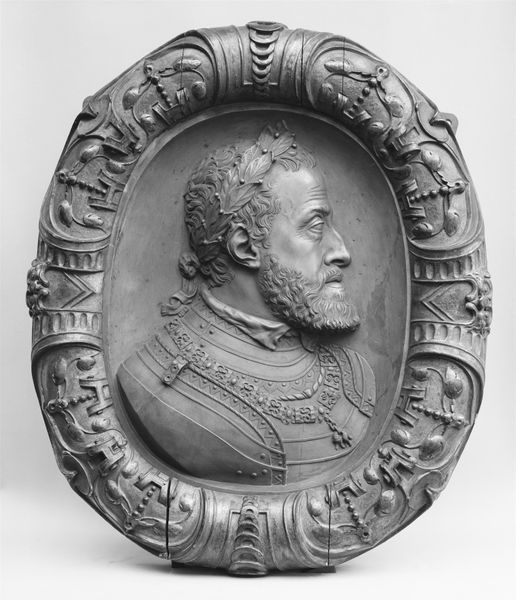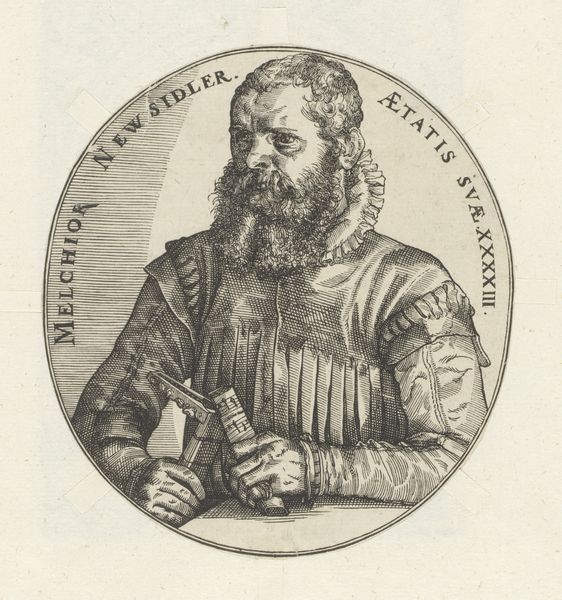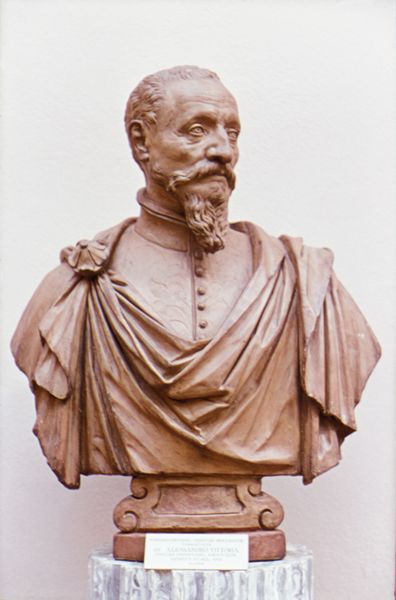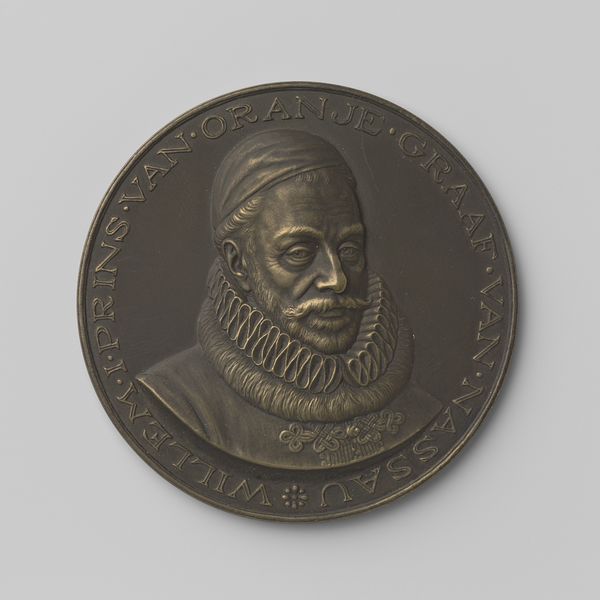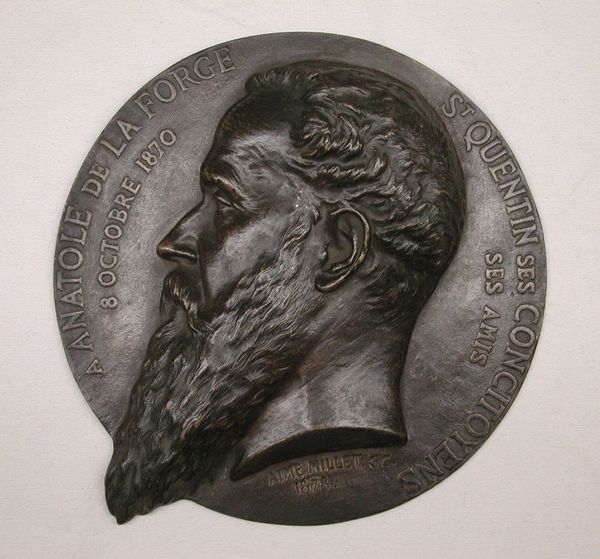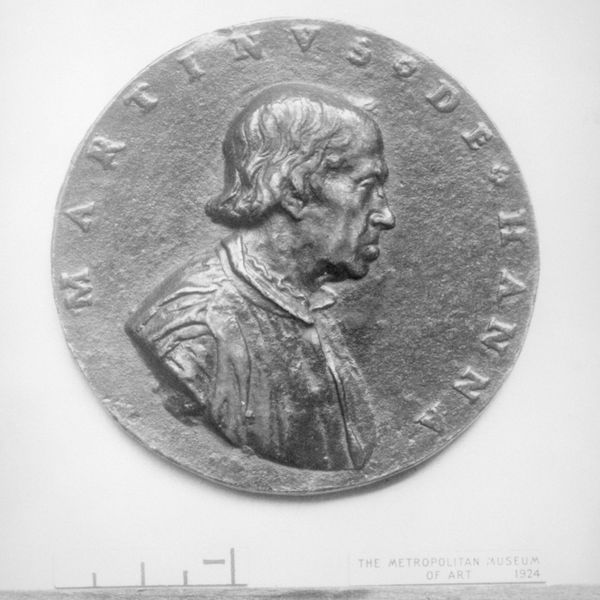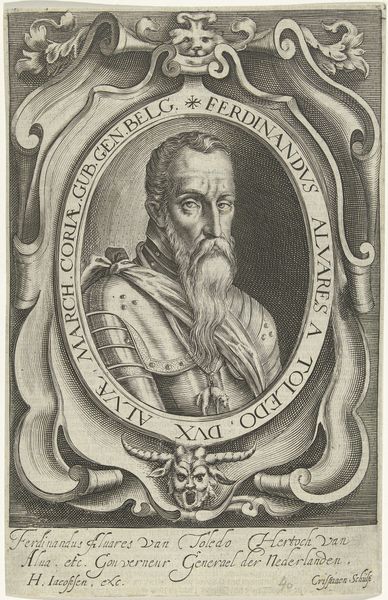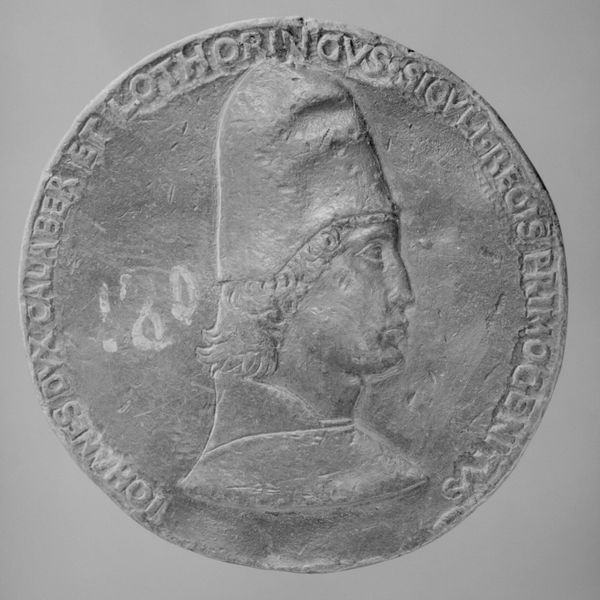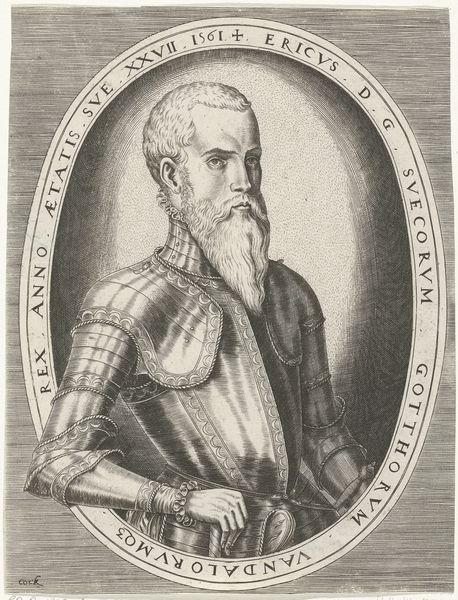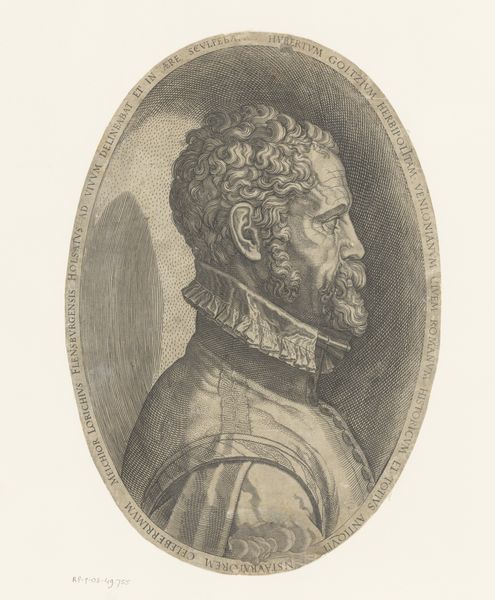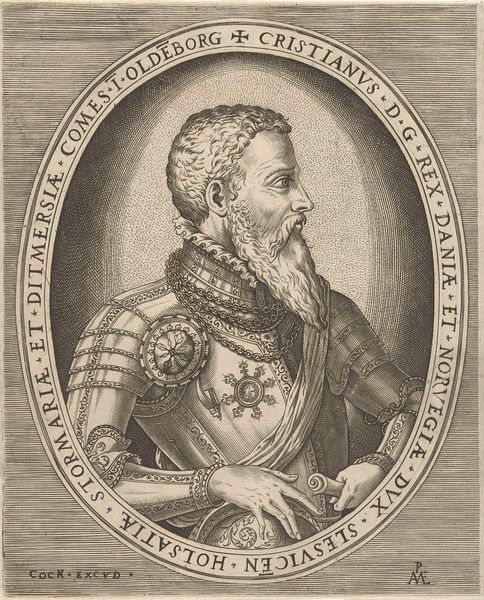
Henry IV, King of France (b. 1553, r. 1589–1610) 17th century
0:00
0:00
brass, metal, relief, sculpture
#
portrait
#
medal
#
brass
#
baroque
#
metal
#
sculpture
#
relief
#
sculpture
#
decorative-art
Dimensions: 3 5/8 × 2 3/4 in. (9.2 × 7 cm)
Copyright: Public Domain
Curator: Looking at this brass relief from the 17th century, attributed to Guillaume Dupré, it strikes me as more than just a depiction; it's almost an artifact whispering tales of power and personality. The artwork, titled "Henry IV, King of France," offers an intimate view into the countenance of a ruler long gone. Editor: It definitely has an imposing feel, doesn't it? Almost like staring into the past. I am particularly struck by the texture; the repetitive floral pattern on his doublet combined with that enormous ruff feels simultaneously beautiful and suffocating. You can almost feel the weight of it. Curator: Absolutely. And thinking about Dupré’s process – cold, hard metal coaxed into something so lifelike…It speaks volumes about the artistic skill, but also the socio-political landscape, doesn’t it? Medals like this served as portable propaganda, miniature emblems of royal authority disseminated amongst the elite. Each repetition of his portrait subtly reinforcing his power. Editor: Exactly! Consider the bronze itself: the material and making process highlights that tension between art, craft, and industry. Each strike of the die—think about the labor that went into creating this reproductive portrait! This was designed to circulate and disseminate power but the choice of a cheaper metal opens up the distribution process beyond court circles. How radical! Curator: Radically Baroque! What intrigues me, though, is the King’s expression. There’s a weariness there, a shadow in his eyes that contradicts the bombast of his attire. Is it a glimpse behind the royal facade, perhaps? The artist has captured a human, not just a King. Editor: It's a controlled yet subtly rebellious narrative. That somber expression speaks of knowing the performance expected and the labor, both manual and artistic, required to keep the crown shining. It’s the material’s bluntness contrasted with delicate design work creating a potent social message, perhaps unwittingly. Curator: So, a medal that transcends its initial purpose—becoming not just an emblem, but a meditation. How do you feel about this, now you are standing in front of the original? Editor: It is just captivating—not a straightforward depiction, but a dialogue, crafted in metal, about labor and social meaning.
Comments
No comments
Be the first to comment and join the conversation on the ultimate creative platform.

